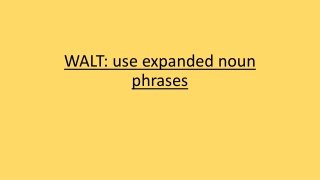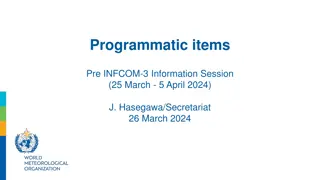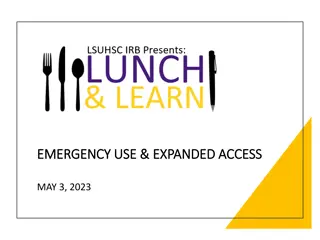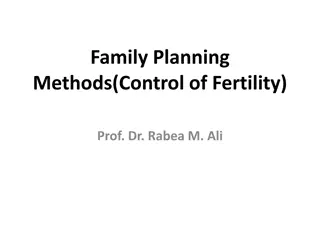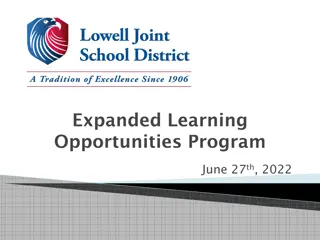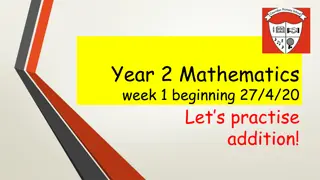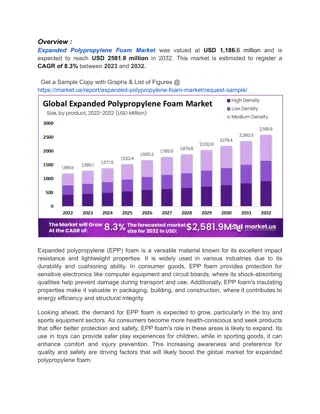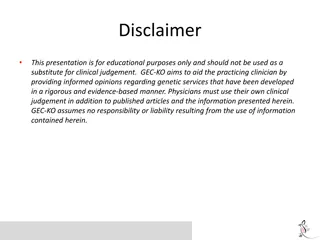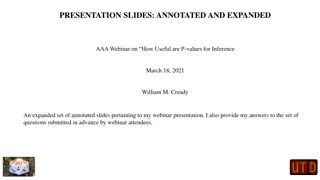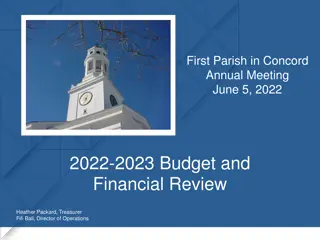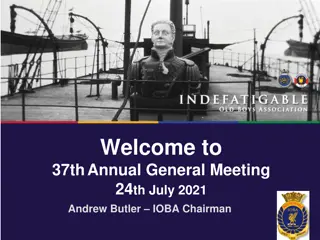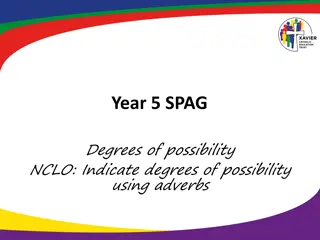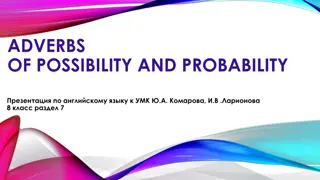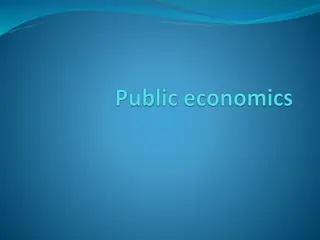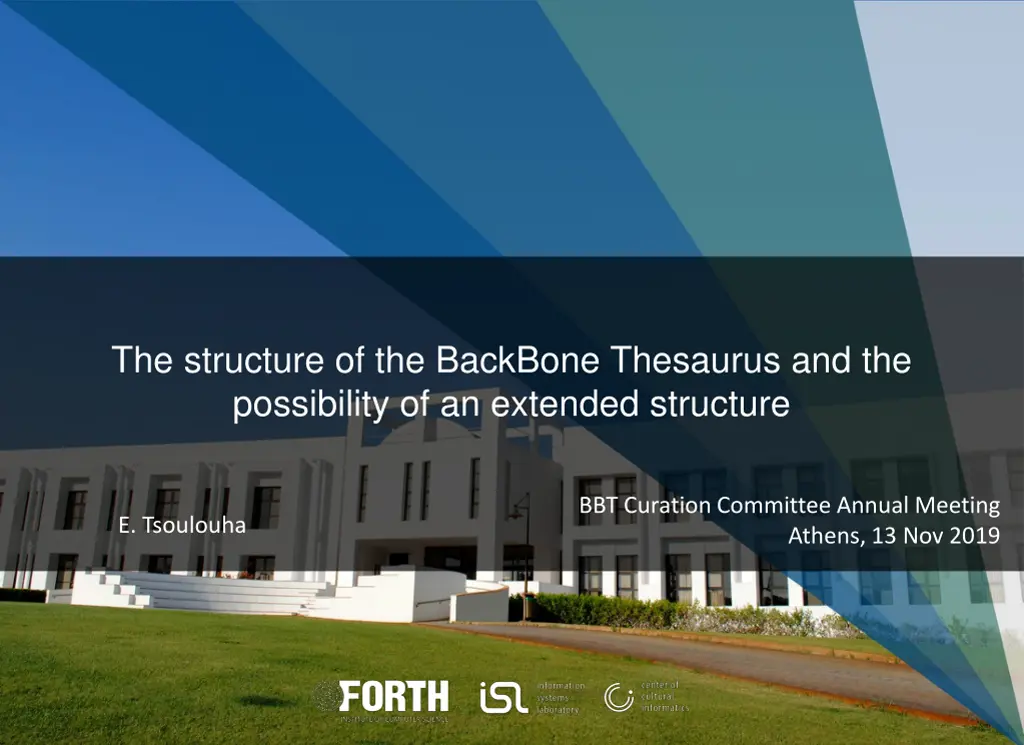
Building the Backbone Thesaurus: Structure, Expansion, and Validation
Explore the structure and potential expansion of the Backbone Thesaurus through BBT principles, facets, hierarchies, and concepts. Delve into the open-world approach and the ongoing validation of its facets and hierarchies for enhanced classification and organization in humanities research.
Download Presentation

Please find below an Image/Link to download the presentation.
The content on the website is provided AS IS for your information and personal use only. It may not be sold, licensed, or shared on other websites without obtaining consent from the author. If you encounter any issues during the download, it is possible that the publisher has removed the file from their server.
You are allowed to download the files provided on this website for personal or commercial use, subject to the condition that they are used lawfully. All files are the property of their respective owners.
The content on the website is provided AS IS for your information and personal use only. It may not be sold, licensed, or shared on other websites without obtaining consent from the author.
E N D
Presentation Transcript
The structure of the BackBone Thesaurus and the possibility of an extended structure BBT Curation Committee Annual Meeting Athens, 13 Nov 2019 E. Tsoulouha
Outline General introduction; principles observed by the BBT The concepts of BBT. The possibility of an expanded BBT.
Building the BBT; principles BBT facets and hierarchies were obtained through a bottom-up analysis of classificatory systems used by humanities researchers. Relations btw BBT terms: hierarchical isA BBT assumes an open-world position: facets and hierarchies within them do not exhaust the domain they classify. Complements of terms or negative definitions are not permitted. BBT is deliberately open to revision: extending the domain of its application, will probably call for the definition of new hierarchies in the BBT, in an orderly fashion (BBTalk)
The Structure of BBT Activities (facet) - activities (top term) - - disciplines - - functions - - human interactions - - intentional destructions Conceptual Objects (facet) - conceptual objects (top term) - - symbolic objects - - propositional objects - - -methods - - concept types - - systems of communication - - - languages Geometric Extents (facet) - geometric extents (top term) - - points - - surface areas Geopolitical Units (facet) - geopolitical units (top term) Material Things (facet) - material things (top term) - - built environment - - mobile objects - - physical features - - structural parts of material objects Materials (facet) - materials (top term) Natural Processes (facet) - natural processes (top term) - - geneses - - natural disasters Roles (facet) - roles (top term) - - offices - - roles of interpersonal relations Social Collective Entities (facet) - social collective entities (top term) - - organizations Types of Epochs (facet) - types of epochs (top term)
Validating BBT facets and hierarchies Potential areas of conflict; facets and hierarchies to be reviewed and/or restructured. concepts Conceptual Objects methods languages
concepts (isA Conceptual Objects) Proposal: see if we actually need it. have a closer look on what motivated it, go through the terminology samples collected when the BBT was being created. review what has been connected to it by AA, DAI and/or FRANTIQ and the SKOSified thesauri in use by the Linked Conservation Data Consortium see whether parts of AAT s Associated Concepts could fit the description or not. if yes, rename it to *concept types* or anything more appropriate to avoid confusion after all, BBT lists terms standing for concepts.
Conceptual Objects (BBT facet) It is considered much too obscure to be of any use to thesauri maintainers. Alternatives: Remove Conceptual Objects facet altogether, replace it with two independent facets Symbolic Objects Propositional Objects make languagesisA Symbolic Objects AND Propositional Objects make methodsisA Symbolic Objects AND Propositional Objects decide where *concepts* fit in the equation (if at all). Keep Conceptual Objects facet, as when contrasted to Material Things it reflects a deeply entrenched dichotomy among things that are physical and things that are not. BUT:we ll have to allow for an expansion of the BBT by adding an extra level of hierarchies No matter what we do with Conceptual Objects, we might consider introducing an information objects hierarchy, instead of leaving it as an inference. No concrete proposal, just food for thought. Languages and methods would be specifications of that concept instead.
methods (isA Conceptual Objects) It seems that methods could be considered kinds of propositional objects according to their definition. That the entity it abstracts over is E29 Design or Procedure in the CRM (i.e. a specification of E73 Information Object hence both an instance of E89 Propositional AND E90 Symbolic Object) is not to say that the identity of methods relies on their rendition in a symbolic form. This term classifies systems of specifications, restrictions and regulations about the design (this involves setting the principles, specifying the requirements and the means for achieving the desired result, estimating the consequences and the expected outcome) and/or the performance of the necessary activities (application of the selected principles and rules, provision and activation of the means and requirements for the realization of the chosen goals, re-estimation of the consequences) in order to achieve certain results of a specific type. Rather, methods are best seen as standing for propositions defining a series of steps towards achieving a specific type of result. So that raises the question whether it would be helpful to expand the BBT by allowing for it to have an extra layer of hierarchies
languages (isA Conceptual Object) According to the scope note, the term languages classifies types of systems used to communicate concepts, that comprise a finite set of elements and a set of recursive rules to combine them into a potentially infinite array of discrete expressions. In that sense, it makes more sense to make languages isA symbolic AND propositional objects; the elements making up the vocabulary have purely symbolic character, and the rules can be considered as a set of propositions. Again, that raises the question whether it would be helpful to expand the BBT by allowing for it to have an extra layer of hierarchies
Expanding the BBT (?) The issues pointed at so far seem to motivate expanding the BBT through restructuring some of its hierarchies and adding an extra level of terms where necessary (or more, but not too many). This suggestion may be supported by proposals for an elaborate structure within Material Things (recall the discussion on *biological objects* that might prove to be useful for the purposes of archaeological documentation) possibly Materials too. This is not to say that we will be adding hierarchy levels to every facet to keep them symmetrical. Rather, that we need to examine whether such a need arises in more facets than the ones have already been identified. So with that in mind, we could proceed with the presentations on languages, mobile objects and Materials.

